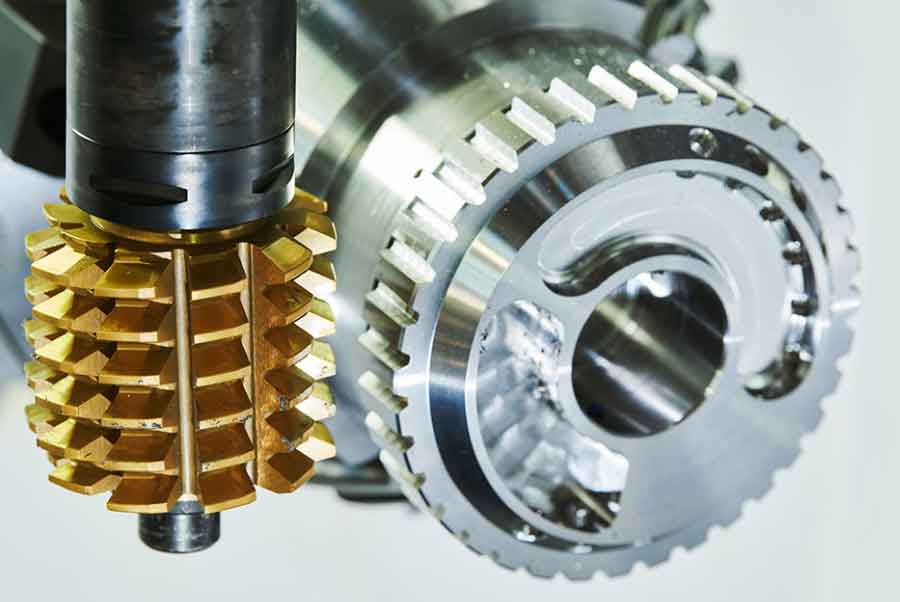Gear hobbing is a highly efficient and widely used process for the generation of gear teeth. It involves the use of a specialized cutting tool called a hob, which has a series of cutting teeth that are arranged in a helical pattern. Here’s a closer look at the process of gear tooth generation through gear hobbing:

- Setup and Workpiece Mounting: The gear hobbing process begins with setting up the hobbing machine and mounting the gear blank, also known as the workpiece, onto the machine’s spindle. The workpiece is securely clamped and centered to ensure precise rotation during the hobbing process.
- Hob Selection and Alignment: The appropriate hob is selected based on the desired gear specifications, such as tooth profile, module, pressure angle, and number of teeth. The hob is aligned with the gear blank, ensuring the correct position and orientation for tooth generation.
- Rotation and Feed: The hobbing machine rotates the workpiece at a predetermined rotational speed, typically synchronized with the rotation of the hob. Simultaneously, the hob is fed into the workpiece at a controlled rate along the axial direction. The rotational and axial movements are coordinated to ensure accurate tooth generation.
- Cutting Action: As the hob rotates and advances into the workpiece, the cutting teeth engage with the workpiece material, progressively removing metal to form the gear teeth. The cutting action of the hob follows a helical path, resulting in the desired tooth shape and profile.
- Continuous Cutting and Multiple Passes: Gear hobbing enables continuous cutting, meaning that multiple gear teeth are generated in a single rotation of the workpiece. This high-speed cutting method is efficient and allows for the production of gears with a large number of teeth. The cutting process may involve multiple passes, with the hob gradually advancing deeper into the workpiece to achieve the desired tooth depth.
- Cooling and Lubrication: To maintain cutting efficiency and tool life, cooling and lubrication are applied during the gear hobbing process. Coolants and lubricants help dissipate heat, reduce friction, flush away chips, and improve surface finish. The selection of appropriate cooling and lubrication methods depends on factors such as workpiece material, cutting speed, and cutting conditions.
- Finishing Operations: After the initial hobbing process, the gears may undergo additional finishing operations to refine the tooth surface and achieve the required precision. These operations can include grinding, honing, or lapping to improve tooth profile accuracy, surface finish, and reduce noise generation.
- Quality Control and Inspection: Gear hobbing involves stringent quality control measures to ensure the accuracy and consistency of the generated gear teeth. Various inspection techniques, such as profile checking, gear analyzers, and coordinate measuring machines (CMM), are used to verify the tooth profile, tooth spacing, and dimensional accuracy.
Gear hobbing is a versatile and efficient process for gear tooth generation, enabling the production of high-quality gears with precise tooth profiles and accurate dimensions. It is widely employed in various industries, including automotive, aerospace, power generation, and machinery manufacturing.
